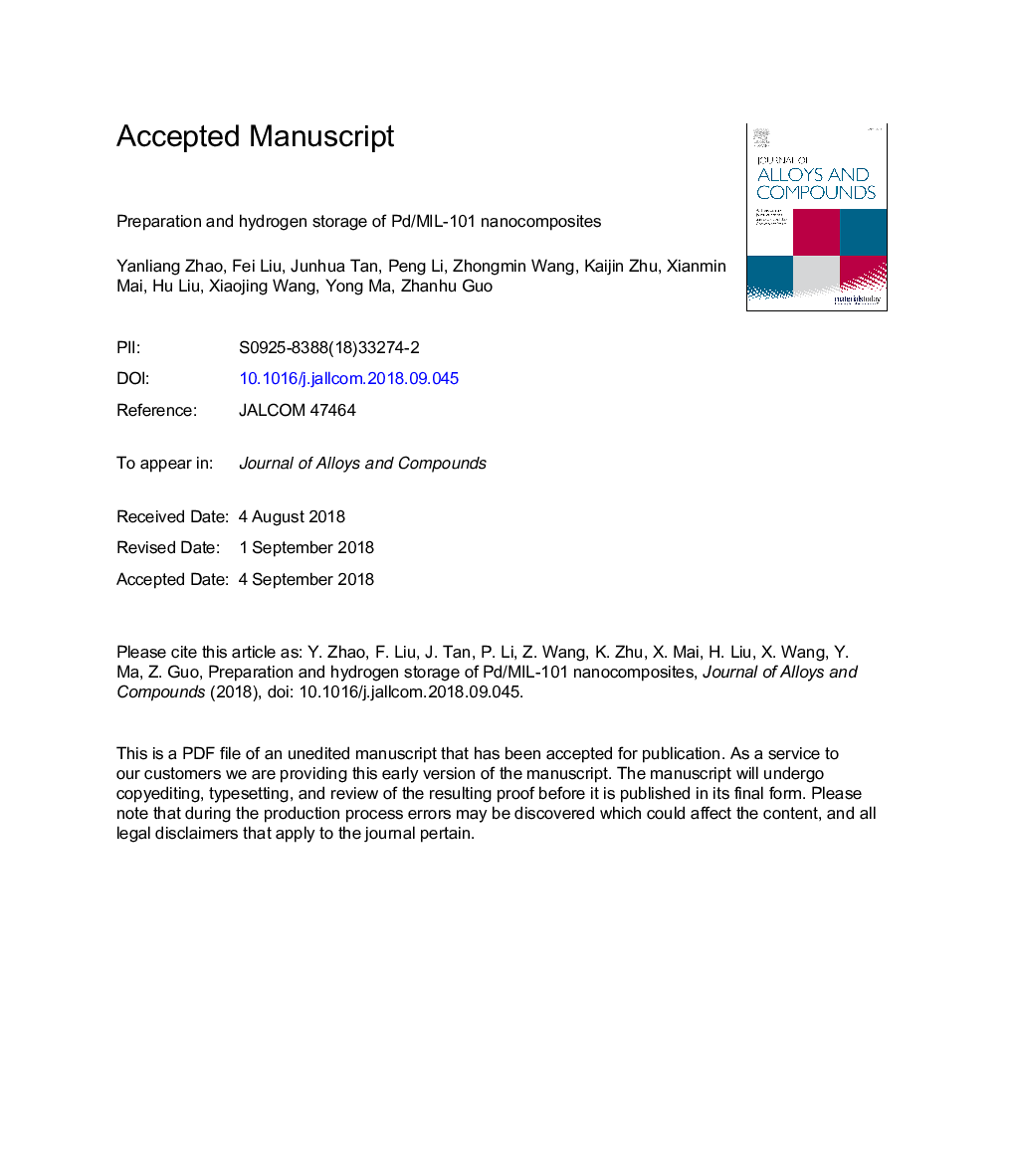| Article ID | Journal | Published Year | Pages | File Type |
|---|---|---|---|---|
| 10155952 | Journal of Alloys and Compounds | 2019 | 20 Pages |
Abstract
The structures and hydrogen adsorption properties of {Cr3F(H2O)2O[(O2C)-C6H4-(CO2)]3ã»nH2O(nâ¼25)} (MIL-101) and its Pd composites have been investigated by X-ray diffraction (XRD) analysis, transmission electron microscope (TEM), X-ray photoelectron spectroscopy (XPS), and specific surface area tests (BET). The as-prepared Pd/MIL-101 composites were microporous and maintained three-dimensional topology of MIL-101 before and after Pd loading that existed in the skeleton. A carbon bridge was formed between Pd metal and MIL-101 to improve the hydrogen storage. The loaded Pd reduced the hydrogen absorption enthalpy of MIL-101, and thus improved the storage of hydrogen compared with MIL-101. The diffusion coefficient reached 7.233â¯Ãâ¯10â9 in the Pd/MIL-101 nanocomposites.
Keywords
Related Topics
Physical Sciences and Engineering
Materials Science
Metals and Alloys
Authors
Yanliang Zhao, Fei Liu, Junhua Tan, Peng Li, Zhongmin Wang, Kaijin Zhu, Xianmin Mai, Hu Liu, Xiaojing Wang, Yong Ma, Zhanhu Guo,
